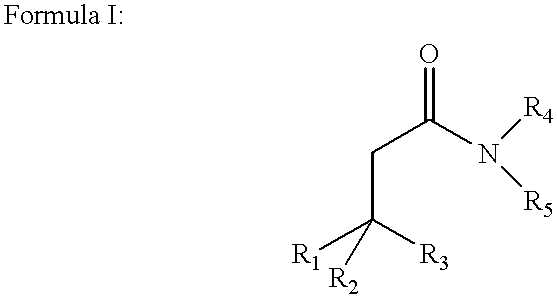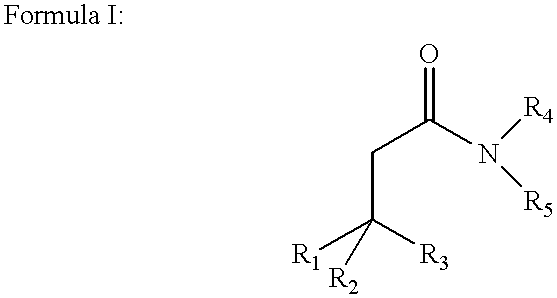Amphiphilic agents for membrane protein solubilization
a technology of amphiphilic agents and membrane proteins, which is applied in the direction of detergent micelles, peptides/protein ingredients, peptides, etc., can solve the problems of destroying the essential structure and functionality of the protein without destroying the membrane-bound protein, and it is difficult, if not impossible, to determine the structure of the membrane-bound protein by x-ray crystallography, and can also disrupt the lipid bilayer
- Summary
- Abstract
- Description
- Claims
- Application Information
AI Technical Summary
Problems solved by technology
Method used
Image
Examples
Embodiment Construction
The following Examples are included solely as an aid to provide a complete understanding of the invention. The Examples do not limit the scope of the invention described and claimed herein in any fashion.
General
Reagents were purchased from Aldrich Chemical Company, (Milwaukee, Wis., U.S.A.) unless otherwise noted. Ether was distilled from benzophenone-sodium ketyl under nitrogen.
NMR spectra were acquired on Bruker AM-250 or AM-300 spectrometers in deuterated chloroform with tetramethylsilane (TMS) as the internal standard. For all other organic solvents, the residual solvent peak served as the standard. For aqueous solutions, an external reference of sodium 3-(trimethylsilyl)-d.sub.4 -propionate (TSP) was used. The solvent and field strengths employed are provided with each spectral listing. For proton NMR spectra, signals are reported as: .delta. xx (multiplicity, #H, coupling constants, assigned H). Multiplicities are abbreviated as: s=singlet, d=doublet, t=triplet, dd=doublet of ...
PUM
| Property | Measurement | Unit |
|---|---|---|
| Electric charge | aaaaa | aaaaa |
| Amphiphilic | aaaaa | aaaaa |
| Solubilization enthalpy | aaaaa | aaaaa |
Abstract
Description
Claims
Application Information
 Login to View More
Login to View More - R&D
- Intellectual Property
- Life Sciences
- Materials
- Tech Scout
- Unparalleled Data Quality
- Higher Quality Content
- 60% Fewer Hallucinations
Browse by: Latest US Patents, China's latest patents, Technical Efficacy Thesaurus, Application Domain, Technology Topic, Popular Technical Reports.
© 2025 PatSnap. All rights reserved.Legal|Privacy policy|Modern Slavery Act Transparency Statement|Sitemap|About US| Contact US: help@patsnap.com



